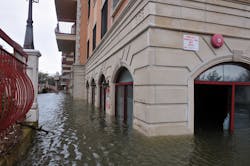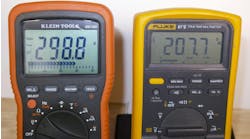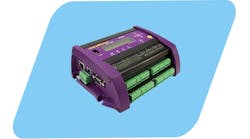Post-Tropical Cyclone Sandy, otherwise known as Hurricane Sandy, made landfall just south of Atlantic City, N.J., in late October 2012. The storm caused billions of dollars in damages and left millions without power. By the time this article goes to press, nearly all damaged facilities will be back up and running and performing at full operational capacity. Most flooded electrical assemblies and components will have been replaced or field reconditioned. But just because the lights are on doesn’t mean there aren’t underlying issues that linger behind the scenes. The reality is hidden flaws may have developed as a result of this natural disaster that — if left undetected — could lead to future failures.
Other than NEMA’s free guide to “Evaluating Water-Damaged Electrical Equipment,” available for download on the organization’s website, there isn’t a great deal of information that addresses remedial measures related to flood-damaged electrical equipment. There’s even less, if any, information related to potential ongoing damage that can reduce equipment life and cause unexpected failures.
This article will examine the consequences of flood damage in regard to the development of short- and long-term flaws based upon observations obtained from previous experience as well as take a look at appropriate test methods that can ensure long-term reliability of electrical equipment.
General considerations
Water alone can be extremely harmful to electrical equipment, but flood water can be even more detrimental, because it contains debris, salts, metals, acids, silt, and many other items in solution or suspension. After a flooding event, components require immediate detailed cleaning followed by a dry-out period. The sooner you can do this, the better. Otherwise, the damage will worsen. Not only is it necessary to dry out the components themselves, but it’s also critical to thoroughly dry out the room where the equipment is located — otherwise the high humidity conditions can cause the dry components to reabsorb unwanted moisture. Getting the room dry and keeping a low humidity atmosphere in any electrical room is essential.
Let’s consider electrical equipment in a simple manner to address the general considerations for remedial actions following flood damage. Electrical equipment consists of components that serve simply as conductors or insulators, designed to assist or thwart the flow of electrical current. Then there are structural components, which exist strictly to support the conductors and insulators — or the insulators themselves can act as structural components. Finally, there are devices that primarily allow mechanical actions to occur. Consider each of these groups separately and then move on to individual types of equipment, depending on their specific nuances.
Conductors
You can address this group of components in a fairly simple manner by thoroughly cleaning their surfaces and then drying them before any corrosion can take place. Minor surface corrosion can also be carefully removed as long as it’s not too deep — just make sure not to remove any plating. Remember to keep the room dry, or the corrosion could come back. Deeper damage will require disassembly and replating.
Interfaces where conductors meet insulators can present greater challenges. These interfaces can hold contaminants in films or sediment deposits that can cause future corrosion or insulation damage. Greater voltage gradients exist at these interfaces. For medium-voltage equipment, you’ll often find these high stress locations are where partial discharge (PD) activity originates (see Putting Partial Discharge into Perspective). Clean these areas thoroughly, and realize that disassembly may be necessary.
Separable connectors used in medium-voltage cable system applications are designed to exclude water, so the termination and splice connections should not be damaged. Dismantle all cable plugs and sockets, and inspect them to confirm no contamination has occurred within the interface. If you don’t see any issues, reassemble these components with fresh grease. If you do uncover problems, replace those components immediately.
Cable and wire require closer consideration
The open ends of the cables can allow moisture to enter that wick throughout the entire length of the cable. In some instances, the cable can dry out over time. In more severe cases, however, purging the cables with nitrogen has been successful, especially for medium-voltage cables where insulation moisture levels are much more critical. Another alternative for medium-voltage cables may be to consider using a process that injects the cables with a silicon-based fluid. This approach holds the additional advantage of also potentially improving pre-flood cable insulation defects and extending life. The concern for all cables is the potential long-term damage due to corrosion from the residue left behind, since cleaning the internal portion of the cable is difficult if not impossible. In many cases, cable replacement may be the best solution.
Switchgear secondary wiring also requires special examination. Experience has shown that low-voltage connection terminals that have been immersed in flood water will continue to corrode even after cleaning, especially those with positive polarity. This has been attributed to the effect on the metal by deposits of acidic materials that were not removed during washing. The reaction between the acid, metal, and air — with electrolytic action — produces corrosive salts, which can lead to future problems. Contaminants from flood water will likely propagate throughout stranded copper control wiring by capillary action, which can lead to long-term copper corrosion and insulation breakdown. Speaking of corrosion, make sure you clean all grounding connections to prevent future problems.
Insulators
Because flood water is conductive, it can have a negative effect on insulation. Certain types of insulation, such as porcelain, do not absorb water. Therefore, simple cleaning to remove residue is all that is needed to get these components back in service. Other types of insulation, such as epoxy, may have a natural glossy finish — or may be coated with an anti-tracking film — to inhibit moisture entrance.
Oftentimes, a simple visual inspection can provide a good indication of whether or not the insulation likely absorbed water, and a basic insulation resistance test works well to recognize wet insulation. Using warm dry circulating air to remove insulation moisture while monitoring insulation resistance improvement has been successful in many situations. Refer to NETA standards, such as ANSI/NETA MTS “Standard for Maintenance Testing Specifications for Electrical Power Equipment and Systems,” to ensure minimum acceptable test results are reached before energizing.
Cellulose insulation is found in dry-type transformers as well as many control power transformers and coils. It absorbs moisture readily, but can also be dried out in the same manner as other insulation types. However, the contaminants, which are likely to be left behind, can create PD activity that ultimately reduces operating lifetime.
Mechanisms
These components are the heart of all circuit breakers, and optimum mechanism performance is essential for safety and system protection. Mechanisms consist of many moving parts, including bearings, pins, rings, cylinders, and latches — all of which operate in concert to provide quick
acceleration of the moving contacts.
If mechanisms have not been immersed in flood water, then they should be thoroughly inspected, keeping in mind that a damp room will be very humid and can lead to corrosion problems later on. Those mechanisms that have been immersed in water must be thoroughly cleaned. Although this process may remove the obvious contamination, it is difficult to remove all residue. In addition, there is a strong possibility that the lubrication, which is so critical to proper operation, will be left with traces of silt or sediment. Even small amounts of these contaminants can lead to problems in the long term. As such, complete teardown and reassembly will likely be the only viable solution. In fact, in the long run, it will probably be necessary to replace the mechanism or the complete apparatus.
Whether electronic or electromechanical, protective and control relays will very likely be damaged by flood water and need to be replaced. It’s also important to examine equipment enclosures. Metal-clad equipment is designed with protective paint coatings for normal environmental conditions; however, it is not made to withstand the corrosive nature of flood water. Clean any structural metals that are part of the electrical equipment assembly (both internal and external surfaces), and repaint them when necessary.
After energizing
Power restoration is a significant accomplishment in the tedious flood recovery process, but the next step should be to employ testing strategies to ensure the lights remain on.
Immediately after energizing, check all medium-voltage equipment for the presence of PD activity using ultrasonic sensors to detect surface problems and TEV sensors to detect internal component or apparatus flaws. Conduct a PD survey weekly for the first month and quarterly for the first year. For more critical assets, consider installing permanent monitoring equipment.
Although PD testing will go a long way toward ensuring insulation integrity, infrared surveys should also be conducted to ensure no conductor-related problems are occurring. Ideally, the flood restoration crew would have the opportunity to install infrared viewing ports on enclosure panels to allow regular thermography inspections to be performed more efficiently and safely. In addition, check circuit breakers regularly using first trip timing instruments and other technologies to ensure proper operation and to exercise the mechanisms.
An experienced technician has a trained eye to quickly spot signs of early anomalies, and regular visual inspections should be introduced to determine if ongoing corrosion is taking place on all equipment, including secondary wiring, conductors, structural components, and enclosures.
One major consequence of electrical equipment flood damage is that the long-term asset lifetime will likely be reduced. This factor will require the owner to accelerate his rebuild or replacement investment planning strategy. In some cases, the remaining asset life after flooding has been decreased by as much as 50%.
Genutis serves as president of EA Technology, located near Tampa, Fla. He can be reached at [email protected].
SIDEBAR: Putting Partial Discharge into Perspective
According to industry estimates, 85% of medium-voltage equipment failures are caused by partial discharge (PD) activity. PD is defined as a breakdown that does not completely bridge the gap between two electrodes. It is a partial failure of the insulation that occurs because of contamination, flaws, voids, or irregularities inside or on the surface of the insulation. Common causes include poor manufacturing processes, improper design, poor workmanship, and adverse environmental conditions. These imperfections cause local stresses that exceed the capability of the insulation and generate small sparking events that produce signals with unique characteristics that can be detected non-intrusively while the equipment remains in normal operation.
Experience has shown that internal insulation defects, such as those within cable terminations, instrument transformers, or insulators, can only be detected using Transient Earth Voltage (TEV) sensors that pick up the radiated electromagnetic signals from the flaw while ultrasonic sensors work best for detecting surface problems. This is because they generate small airborne pressure waves that can be “heard” through air vents or equipment enclosure openings.
Partial discharges are rarely present on low-voltage equipment. They are much more likely to occur on medium-voltage equipment where the voltage stress on the insulation is much greater. Once PD is initiated, it will progress until complete failure occurs.



